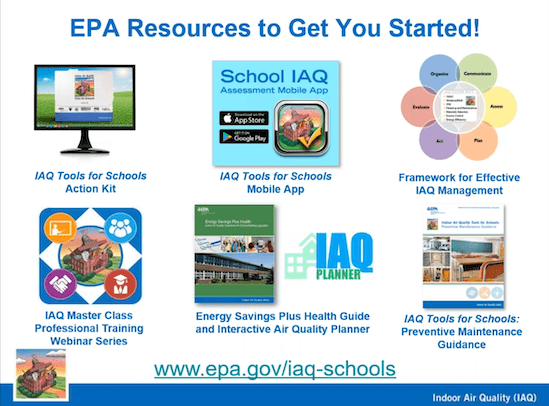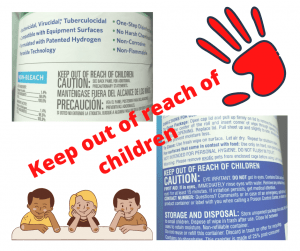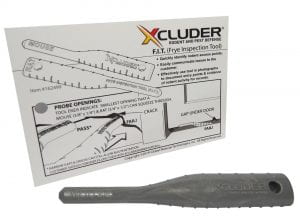A recent EPA nationwide webinar, What Schools Need to Know: Practices and Principles for Healthy IAQ and Reducing the Spread of Viruses, focused on indoor air quality in school settings. Air quality was important before the current pandemic but is now central to the back-to-school issue. For today’s post we’d like to share some EPA and NYS Department of Environmental Conservation resources. Some highlights: airborne disease is not the only issue. Proper surface cleaning and air filtering must be addressed. Products used to kill virus organisms are not just ‘disinfectants’, but pesticides, so their labeled directions must be followed. School buildings across the country vary widely in age, size, and management budget, making indoor air quality an important subject long before SARS Covid-19.

Indoor Air Quality has never been so important. In addition to its usual IAQ resources, EPA has created a specific Covid-19 webpage.
The major takeaway from this webinar’s experts? Using a combination of tactics is crucial to success.
- Social distancing helps because aerosol spread (coughing, sneezing) travels farther than you’d expect. Not only in the air, but particles linger on clothing and items.
- Masks reduce the exhalation of virus, therefore reducing what’s in the air.
- Surface cleaning of high-touch areas. Under optimum conditions, SARS CoV-2 virus can last up to three days on plastic surfaces. There are plenty of surfaces in public buildings. These FOMITES (inanimate, contaminated objects capable of transfer microbes to new hosts) are high-touch areas such as desktops, door handles, faucets, and electronic devices. Always consult a trusted list of disinfecting products and read the label. How the product is applied is just as important. Foggers generally do not leave surfaces wet long enough (20 mins is optimum) to kill virus. CLEANING cloths should not be reused from site to site. Use clean, sterile cloths for cleaning so you are not moving microbes from place to place instead of destroying them. NOTE: while the CDC has a list of effective disinfectants, we recommend that you PLEASE CHOOSE from this list compiled specifically for use in New York State: https://www.dec.ny.gov/docs/materials_minerals_pdf/covid19.pdf
- Hand washing- often and done with care. Emphasize this after toilet use. (This virus also spreads through feces.)
- Air movement. This is not just the use of a fan. Fans recycle the same air around the room. Air movement must include dilution of indoor air with outdoor air as much as possible before, during, and after rooms are occupied. The addition of air filters (properly maintained) such as HEPA filters is highly suggested. HEPA means ‘high efficiency particulate air’ filters. Filtration reduces but can not eliminate airborne particulates.
Air quality depends on more than circulation and filtration, but on proper use of disinfectants. Improper use often induces asthma, and causes health problems. Always read the label.
We remind you that care should be taken with cleaning products used in homes and businesses, as well as schools. Fraudulent claims and risky products are out there. Visit the ABCS of School IPM blog post for more information.

We remind you that care should be taken with cleaning products used in homes and businesses, as well as schools. Fraudulent claims and risky products are out there. Visit the ABCS of School IPM blog post for more information.
For additional information, visit these resources from the Centers for Disease Control and Prevention (CDC) website:




